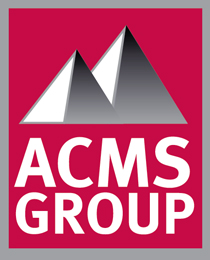Refractory materials are designed to increase the performance of kilns, furnaces, incinerators and reactors in a wide range of industries. The right refractory lining can reduce energy costs while increasing efficiency and ensuring high performance for decades.
But just like with any building material, these linings can fail over the years. Different types of refractory failure can lead to hazards inside an industrial facility or even shut down operations until repairs can be made.
These are a few of the most common reasons behind refractory failure:
- Fallen fiber modules: Improper installation, poor maintenance and excessive corrosion are a few of the reasons that fiber modules on the roof of a kiln can fail. If you notice gaps in the fiber or signs of damage, hire a professional to make repairs before the kiln fails.
- Failing brick walls: Insulating fire bricks (IFBs) are used in most of today’s furnaces, but problems with the brick linings or inadequate installation can cause the bricks to fail as the years go on. Some signs of failing brick include bowed walls or hot spots outside of the unit. Luckily, most issues with failing bricks can be performed quickly if the problem is caught early.
- Tunnel wall issues: Leaning walls aren’t uncommon, but if brick walls are leaning too much, this could indicate that the floor isn’t level. The longer this situation goes unaddressed, the worse the problem will become, and the more likely the chance of refractory failure. Perform routine refractory failure analysis to catch this problem before it gets out of hand.
- Floor cracking: Speaking of floors, temperature fluctuations can cause cracking if thermal expansion isn’t taken into consideration. Expansion joints in the floor are designed to accommodate these temperature changes, but if the joints get blocked with debris, they’ll be ineffective. Make sure to regularly vacuum and clean out the expansion joints to avoid these types of refractory failure.
- Convection castable or corbel damage: Castables and corbels can become damaged during the construction or shipping process—but the cracks can go unnoticed for years until there’s an actual refractory failure. These cracks aren’t always easy to spot at first glance, so be sure to perform in-depth routine checks to look for them. Neglecting this maintenance step will eventually lead to dangerous refractory failure.
- Mating dissimilar materials: It’s not uncommon for different materials to be adjacent to one another—but just because it’s often seen in refractories doesn’t mean it’s not an issue. Dissimilar materials are often mated around peep sights, burner blocks and pressure-relief doors. Because not all materials have the same temperature ratings, these areas can become compromised under extreme heat. We recommend updating your furnace to ensure you have the same materials across the board.
Hire ACMS Group if you notice any issues
If you’ve spotted any of the problems mentioned above while performing refractory failure analysis, bring in our team to correct them. At ACMS Group, we specialize in making all sorts of industrial facility repairs to keep your building safe and up to code. Contact us today to get an estimate for your project.
